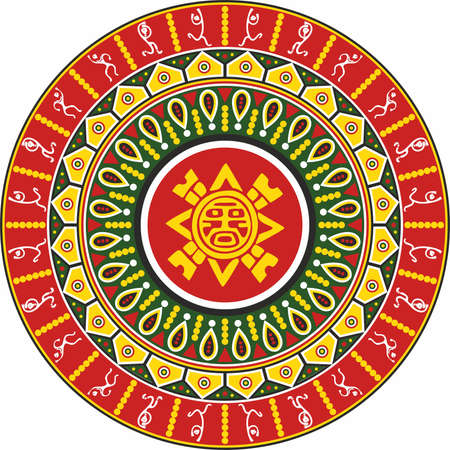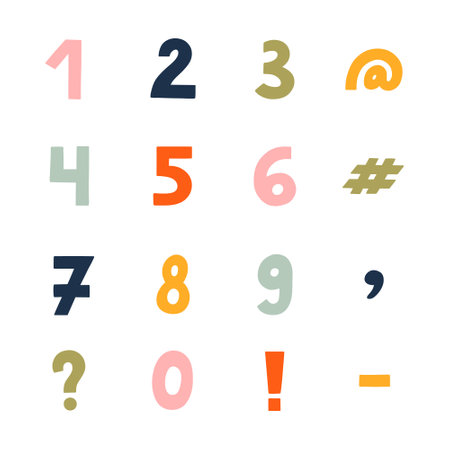Introduction to Auras in UK Spiritual Traditions
The concept of auras has woven itself into the rich tapestry of British spiritual and mystical traditions for centuries. At its core, an aura is believed to be a subtle, luminous energy field that surrounds every living being—a sort of energetic fingerprint unique to each individual. While the idea of auras can be traced back to ancient civilisations across the globe, it has found a particularly intriguing home in the UK, where folk beliefs, Celtic mysticism, and modern spiritual movements often blend seamlessly. In British contexts, auras are not just seen as esoteric phenomena; they’re discussed in community circles from Glastonbury’s spiritual shops to holistic wellness retreats tucked away in the Cotswolds. Traditionally, these colourful energy fields are interpreted as indicators of one’s physical health, emotional state, and even spiritual development. Within British spiritual communities—ranging from psychic mediums and healers to contemporary witches—auras are both a diagnostic tool and a gateway to deeper self-understanding. Over time, interpretations of aura colours have evolved, reflecting local folklore as well as broader trends in Western esotericism. In modern-day Britain, reading and interpreting auras is considered both an art and a science by those who practise it, blending intuition with centuries-old wisdom passed down through generations.
2. The Cultural Context: British Spiritualism and Aura Reading
To truly grasp the meaning of aura colours within the UK, it’s essential to understand their place in British spiritual traditions. Aura reading is not a modern import but has roots woven into the fabric of the nation’s spiritualist movements, local folklore, and even community gatherings. Historically, aura interpretation gained prominence during the late Victorian era, when Spiritualism flourished across Britain. Many spiritualist churches were established in cities like London, Manchester, and Glasgow, offering public demonstrations that included aura readings as a way to connect with the unseen world.
In contemporary Britain, spiritualist churches remain active hubs for aura exploration. These venues often host workshops and circles where practitioners discuss the meanings of different aura colours—a practice seen as both personal insight and communal experience. The table below illustrates how aura reading integrates into various UK contexts:
Context |
Description |
Significance |
|---|---|---|
| Spiritualist Churches | Weekly gatherings featuring mediumship and aura demonstrations. | Cultural continuity; fosters collective understanding of spiritual wellbeing. |
| Local Folklore | Aura-like phenomena appear in folk tales (e.g., “second sight” in Scotland). | Blends mystical tradition with everyday life; shapes local beliefs about intuition. |
| Modern Workshops | Classes on interpreting colours and psychic development. | Accessible self-exploration; keeps traditions relevant for younger generations. |
The enduring appeal of aura reading in the UK stems from its ability to bridge personal spirituality and community identity. Whether encountered in a candle-lit church hall or discussed over tea in a village kitchen, the practice reflects a broader British fascination with unseen energies and subtle realities. This layered context gives added depth to interpreting what each colour might mean within these shores, intertwining history, belief, and daily life.

3. Decoding Colour Meanings: Core Aura Colours and Their Interpretations
In the context of UK spiritual traditions, interpreting the colours found within a person’s aura is not just an esoteric exercise but a nuanced practice that blends Celtic roots, British folklore, and contemporary spiritual psychology. Let’s take a detailed look at some of the most commonly observed aura colours in Britain, how they are typically understood here, and how these interpretations might set themselves apart from other global traditions.
White: Purity and Ancestral Connection
Within the UK, a white aura is often linked to purity, spiritual enlightenment, and ancestral guidance—echoing ancient Druidic beliefs where white symbolised sacredness and connection to higher realms. Unlike some Eastern traditions that focus on transcendence alone, UK interpretations frequently highlight the importance of lineage and the wisdom passed down through generations.
Blue: Communication with Clarity
Blue is commonly associated with calmness, clarity, and honest communication. In British spiritual circles, blue also carries echoes of the “blue stones” of Stonehenge—thought to enhance psychic abilities and facilitate clear thought. There’s a particular emphasis in the UK on blue as a protector against negativity, drawing from both folk magic and modern holistic therapies.
Green: Healing and Hearth
A green aura is universally recognised as representing healing energy, but in the UK this interpretation is closely tied to the land itself—the rolling hills and ancient forests. Green here symbolises not only personal wellbeing but also a deep connection to nature and community (the “hearth”), reflecting Britain’s longstanding reverence for its landscapes.
Yellow: Joy with a Rational Edge
The colour yellow in auras is seen as indicative of joy, intellect, and creativity. Uniquely in the UK tradition, there’s often an added layer of rationality—perhaps influenced by the nation’s philosophical heritage—which encourages balancing sunny optimism with sound judgement.
Purple: Intuition Rooted in Tradition
Purple is strongly associated with intuition and spiritual insight. While this is common worldwide, in UK lore purple may also allude to royal heritage or wisdom held by elders—a nod to both history and mystical leadership.
Red: Vitality Grounded in Reality
A red aura signals vitality and strong willpower. In British interpretations, there’s less focus on aggression or unchecked passion (as seen elsewhere), and more emphasis on grounding oneself practically—living robustly but sensibly within one’s means.
Black/Grey: Shadows for Growth
Finally, black or grey hues aren’t always viewed negatively in the UK; instead, they may represent shadow work—an opportunity for introspection and growth rather than misfortune or evil spirits. This reflects a pragmatic approach to challenges, encouraging individuals to face adversity as part of their personal evolution.
These nuanced readings showcase how British spiritual traditions weave together local symbolism, historical narratives, and practical wisdom when interpreting aura colours—offering a distinctive perspective compared to other cultural approaches around the world.
4. Local Nuances: Unique British Perspectives on Aura Colours
The British Isles, with their tapestry of ancient legends, lush landscapes, and diverse communities, offer distinctive interpretations of aura colours that reflect the nation’s unique history and cultural symbolism. The meaning of auras in the UK context is often shaped by local geography—think misty moors, verdant countryside, and coastal blues—as well as centuries-old folklore and modern symbolism. Below is an exploration of how particular hues resonate differently within the UK compared to broader global or Western metaphysical traditions.
Colour Associations Rooted in British Heritage
British spiritual practitioners frequently attribute nuanced meanings to certain aura colours, influenced by the natural environment and national identity:
Colour |
UK-Specific Symbolism |
Cultural Reference |
|---|---|---|
| Green | Strongly associated with growth, healing, and renewal; echoes the rolling hills and iconic green countryside, symbolising hope and connection to the land. | The “green man” in Celtic lore; English gardens; St. Patrick’s Day symbolism in Northern Ireland. |
| Blue | Represents tranquillity, loyalty, and depth; linked to British seas and skies as well as a sense of calm resilience seen in national character. | Union Jack blue; literary references (e.g., “Keep Calm and Carry On”); coastal traditions. |
| Purple | Connotes wisdom, royalty, and spiritual insight—rooted in historical associations with monarchy and mystery. | Royal regalia; Arthurian legend; ecclesiastical vestments. |
| Red | Signifies energy, courage, and sometimes defiance—mirroring both passion for social causes and historic struggles. | Poppies for Remembrance Day; Tudor rose; red postboxes as everyday icons. |
| White/Silver | Purity, transition, ancestral connections—often used in rituals or remembrance ceremonies. | Druidic traditions; white cliffs of Dover; royal weddings. |
Aura Readings Shaped by Geography and Storytelling
Aura interpretation in the UK is rarely divorced from its storied landscapes or communal memory. For example, healers in Scotland might see blue not just as peacefulness but also as an echo of lochs and northern skies. In Wales, green may be interpreted through the lens of ancient forests or dragon lore. These subtleties make British aura readings uniquely textured—a blend of geography, myth-making, and lived experience.
5. Aura Reading in Practice: British Experiences and Stories
While the theory of aura colours is fascinating, it’s the real-life stories and everyday experiences that truly bring the subject to life within British spiritual circles. Across the UK, from London’s bustling alternative fairs to quiet corners in Yorkshire, individuals are exploring aura reading as both a personal and communal practice.
Personal Anecdotes: From Scepticism to Insight
Take, for example, Emily from Brighton—a self-proclaimed sceptic before her first aura reading at a local holistic festival. She recalls, “I went in expecting nothing more than entertainment, but when the practitioner described my aura as a shifting blend of indigo and green, matching my recent life changes and emotional state, it felt oddly validating.” For Emily, the experience sparked an ongoing curiosity about energy work and self-awareness.
Case Study: The Healing Room in Manchester
Aura interpretation is also woven into therapeutic settings. At The Healing Room in Manchester, practitioners like David use aura photography and intuitive readings as part of their holistic approach. In one memorable case, a client struggling with chronic anxiety saw repeated flashes of red and orange in her aura—colours traditionally linked to grounding and emotional turbulence. Over several sessions, as she engaged with mindfulness techniques and energy healing, her aura reportedly softened to include calming blues and greens. David notes, “For many clients, seeing their aura change is a powerful visual cue that internal shifts are happening.”
Interview Excerpt: Wisdom from a London Spiritualist
June Adams, a well-known spiritualist medium from South London, shares her perspective: “In Britain, we’ve always blended tradition with innovation. I see people from all walks of life looking for meaning beyond the material. Interpreting someone’s aura isn’t just about reading colours—it’s about connecting to their story.” June recounts working with clients who found closure after grief or clarity during major life transitions through insights gained in aura readings.
These stories highlight how aura interpretation serves as both a mirror and a map—reflecting inner states while guiding personal growth. Whether approached with open-minded curiosity or deep spiritual intent, the practice continues to find relevance across diverse British communities, blending ancient wisdom with contemporary sensibilities.
6. Contemporary Views: Scientific Skepticism vs. Spiritual Experience
The UK, with its rich tapestry of spiritual traditions and a strong scientific heritage, is fertile ground for lively debate about the existence and interpretation of auras. On one side, modern science—often represented by universities, sceptics’ societies, and mainstream media—approaches auras with healthy doubt. The prevailing scientific view is that there is currently no empirical evidence supporting the existence of energetic fields visible as coloured auras around people. Explanations for aura readings are typically rooted in psychology, such as synaesthesia or the power of suggestion, rather than metaphysics.
Yet, across Britain’s urban centres and rural retreats alike, personal spiritual experience continues to shape many people’s beliefs about auras. From Glastonbury’s alternative scene to spiritualist churches in the North, individuals report vivid encounters with auras—seeing colours during meditation or feeling shifts in energy at sacred sites. For these practitioners, the lack of scientific validation does little to diminish the deep personal meaning they find in aura interpretation.
A Cultural Balancing Act
Britain’s cultural landscape reflects this balancing act between rational analysis and intuitive knowing. While some may dismiss aura reading as pseudoscience, others see it as a valid part of their spiritual toolkit—an extension of centuries-old traditions from Celtic mysticism to modern energy healing. Workshops blending mindfulness, colour therapy, and traditional British folklore are increasingly popular, suggesting an appetite for approaches that bridge worlds rather than polarise them.
Bridging Perspectives: Can Science and Spirituality Coexist?
There are signs that dialogue between sceptics and believers is evolving. Some psychologists are interested in exploring why so many people find aura practices meaningful—even if only as metaphor or self-reflection tool. Meanwhile, progressive spiritual practitioners are open to integrating scientific insights about perception and consciousness into their work.
The Future of Aura Interpretation in the UK
Ultimately, the UK’s ongoing conversation about auras mirrors broader questions about belief, evidence, and personal truth. Whether seen through the lens of science or spirituality—or something in between—the colours we perceive in ourselves and others remain a compelling invitation to explore what it means to be human in a society that values both reason and wonder.


